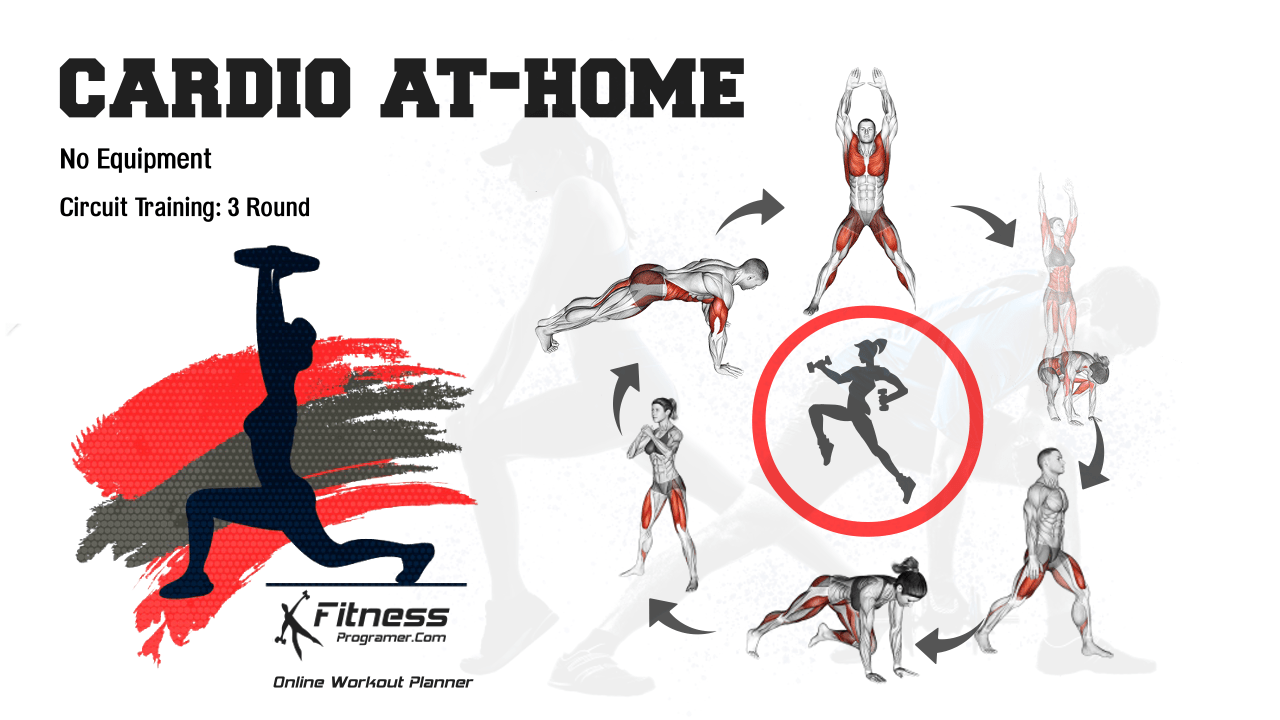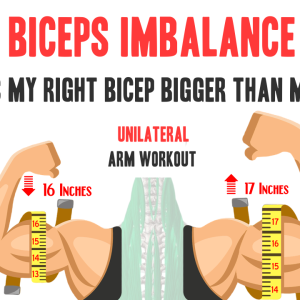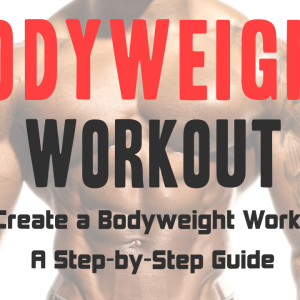Contents
Do you want to do some cardio exercises that you can do in your own home? If going to the gym is difficult for you, then do your own cardio at home. If you don’t have the equipment, use what you have (your bodyweight).
Cardiovascular exercise is great for your lymphatic system, your skeletal system, your heart, lungs and circulation. Plus aside from heated yoga or a massage, it’s one of the best stress relievers there is. If you’ve had a bad day or a stressful day, doing any kind of cardio routine will be great for your health and vitality.
Though you may feel more at ease if you have a personal trainer dictating your every move, there are also some advantages to doing your own bodyweight workouts.
- It’s cheap! No cost/Minimal cost involved. There is no need to purchase additional equipment. Having clothes and shoes that you’re comfortable with are enough for you to start doing the exercises.
- No gym, no problem. You can workout anywhere. You are not limited within the four walls of the gym. You can do bodyweight cardio in your room, in your house, even in your office.
Add some fun to your routine
Compare an hour on the cardio machine like a treadmill or elliptical machine to an hour running in the park. Which brings you more excitement?
You make the rules.
Flexibility is the name of the game. Body weight cardio can be changed if you feel you’re approaching a plateau or you’re just getting bored. Mixing up a lot of bodyweight exercises can keep your enthusiasm high without sacrificing results.
Cardio At Home
Remember to warm up before starting any cardio exercise and to cool down afterwards. Start with a few minutes of light movement, such as walking or marching in place, and gradually increase the intensity of your workout.
By combining all of these exercises and doing the circuit three times, you’ll be able to have a good cardio workout at home with no extra equipment needed.
Circuit Workout: Do each exercise for 30 seconds, resting for 15-20 seconds between exercises. Repeat the circuit for 3 rounds.
1- Jumping Jacks
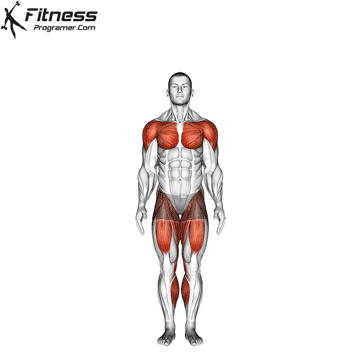
This is done by jumping to a position with legs spread and hands touching overhead and then returning to the position with feet together and hands at the sides. Jumping jacks will help increase circulation and allow the oxygen transfer to happen at a greater pace in between cells. Your red blood corpuscles are increased as you breathe deeply into your lungs.
2- Burpees
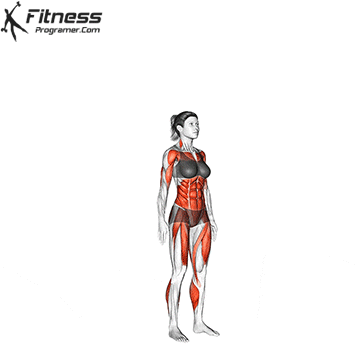
Burpees are a full-body exercise that can be a great addition to your at-home cardio routine. Start in a standing position, then squat down and place your hands on the floor. Jump your feet back into a plank position, then jump your feet back towards your hands and stand up.
3- Walking Lunges
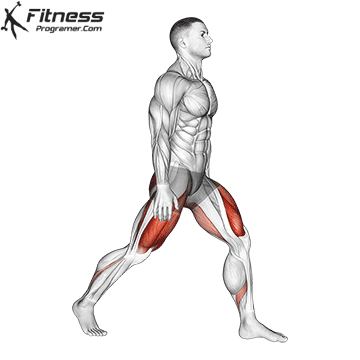
As the name implies, you do lunge with every step. Make sure your knees don’t come over your ankles and that your thighs (quadriceps) go low enough to be 90 degrees or parallel to the floor.
This increases stamina, lung capacity and strengthens your gluteus maximus muscles, thighs, hamstrings and hip flexors while also increasing your heart rate.
4- Mountain Climber
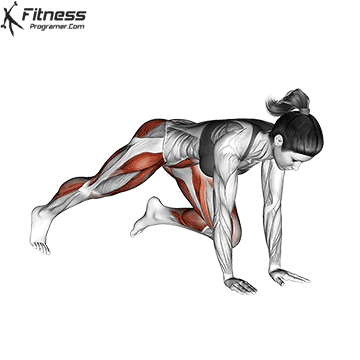
Mountain climbers are a great cardiovascular exercise that can elevate your heart rate and work your core, arms, and legs. Start in a plank position. Bring one knee towards your chest, then quickly switch legs, as if you are running in place. To make it more challenging, you can increase the pace, do the exercise with a weight vest or ankle weights, or add a push-up between each leg movement.
5- Bodyweight Squat
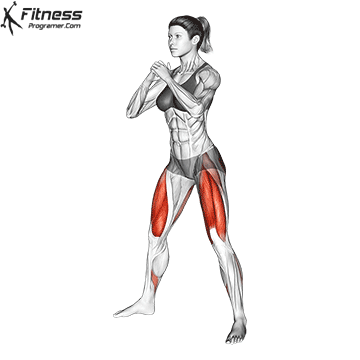
Squats are a compound exercise that work multiple muscle groups, including your quadriceps, hamstrings, glutes, and calves. By performing squats in a cardio workout, you can challenge these muscles to work harder and build strength and endurance.
By performing bodyweight squats in a circuit-style workout, you can elevate your heart rate and improve your aerobic capacity, which can help you feel more energized and improve your overall health.
6- Crossbody Push-up
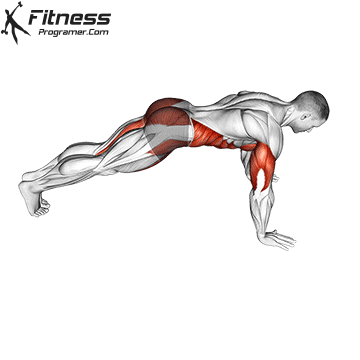
Cross body push-ups are a challenging variation of the traditional push-up that work your chest, triceps, core, shoulders, and back muscles. By adding a rotational movement, cross body push-ups can also challenge your stability and balance, elevate your heart rate, and increase your calorie burn. Remember to focus on proper form and gradually increase the intensity and duration of the exercise as you build strength and confidence.
7- Skater
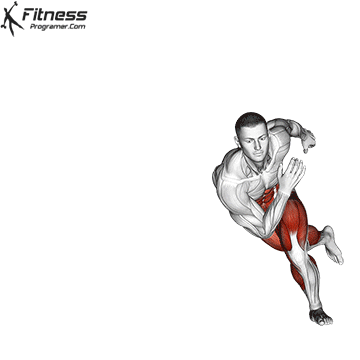
The skater exercise is a bodyweight cardio exercise that mimics the lateral movements of skating. It targets your lower body muscles, including your glutes, quads, and hamstrings, while also engaging your core and cardiovascular system.
Take a big step to your right with your right foot, crossing your left foot behind your right foot. Push off your right foot and jump to your left, landing on your left foot and crossing your right foot behind your left foot.
Continue jumping side to side, swinging your arms to help you generate momentum and maintain balance. Aim to land softly on the balls of your feet, and keep your knees slightly bent and your core engaged throughout the exercise.
The Bottom Line
Starting a new cardio exercise routine at home can be intimidating, especially for beginners. However, with the right guidance and approach, you can start and progress safely and effectively. Here are some tips for at-home cardio beginners:
- Consult with your doctor: Before starting any new exercise routine, it’s essential to consult with your doctor, especially if you have any underlying health conditions.
- Start slow and gradually increase intensity: It’s essential to start slow and gradually build up your endurance and intensity level. This will help prevent injury and ensure you progress safely.
- Incorporate bodyweight exercises: Bodyweight exercises like jumping jacks, mountain climbers, and burpees are excellent cardio exercises that require no equipment and can be modified to your fitness level.
- Focus on proper form: Proper form is essential for preventing injury and ensuring you get the most out of your workout. Focus on maintaining good posture and engaging the right muscles during each exercise.
- Track your progress: Keeping track of your progress can help you stay motivated and see improvements in your fitness level.
- Don’t forget to warm up and cool down: Warming up and cooling down are essential parts of any exercise routine. Take a few minutes to stretch before and after your workout to prevent injury and aid in recovery.
In summary, starting an at-home cardio routine as a beginner can be intimidating, but by following these tips, you can progress safely and effectively while reaping the benefits of cardio exercise. Remember to start slow, focus on proper form, and consult with your doctor before starting any new exercise routine.


